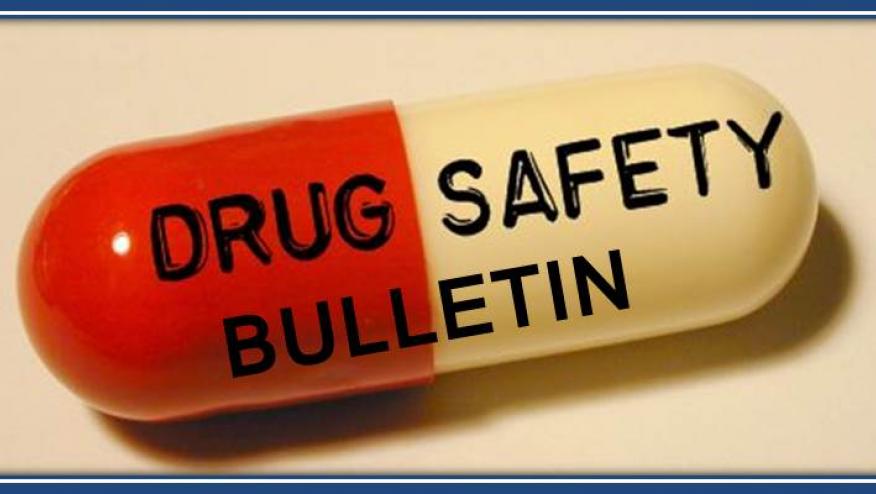DSB Reports & Updates - January 2016 Save

Comparative Harmful Risks with Targeted Immunomodulators. Desai et al did a systematic review of the literature, findings of 10 head-to-head RCTs and 51 observational studies. They found that risk of treatment discontinuation due to AEs was higher with infliximab than with adalimumab or etanercept in RA, PsA, and AS. A higher risk for serious infections was noted with infliximab than with abatacept, adalimumab, or etanercept in RA. Risk for treatment discontinuation due to AEs, serious infections, and tuberculosis was lower with etanercept than with adalimumab in RA. Limited evidence suggested no comparative differences in risk for mortality, malignancies, and herpes zoster for adalimumab, etanercept, and infliximab in RA. Head-to-head comparative evidence for other TIMs and non-RA populations was insufficient to draw conclusions for most of the safety outcomes. (Citation source http://buff.ly/1PcwLqe)
Fluconazole Increases Risk of Spontaneous Abortion. A Danish registry examined 3315 women exposed to fluconazole between 7 - 22 weeks’ gestation and found spontaneous abortions were increased risk of with fluconazole exposure (HR, 1.48; 95% CI, 1.23-1.77). The association between fluconazole exposure and stillbirth was not significant (HR, 1.32 [95% CI, 0.82-2.14]). (Citation source http://buff.ly/1Ko3zF3)
Online Drug Safety Course for Medical Staff. The International Medication Safety Network has posted an online tutorial Drug Safety with a series of PowerPoint lectures on various safety topics. Ideal for nurses, medical assistants, physician assistants, nurse practitioners and those interested in drug safety, this series can be reviewed within an hour. The Course was developed in 2008 by the Saudi Medication Safety Center is designed for any healthcare provider involved in the medication use process, e.g., physicians, dentists, pharmacists, nurses, respiratory therapists, etc.
Certification is valid for a period of two years, after which time it must be renewed. The Course curriculum is revised every two (2) years and slides posted are for 2016. Objectives include identifying human factors associated with medication errors, review definitions related to medication safety, and discuss the impact of latent failures on medication safety. Lecture topics include: Overview of Medication Errors; Sound-Alikes; High Alert Medications; and Medication Error & Near Miss Reporting. Pearls like: Drugs with most safety risk (opioids, anticoagulants, insulin, and chemotherapy) and “Abbreviations save minutes - but prohibiting abbreviations saves lives”. (Citation source http://buff.ly/1Ko4JAq)
December 2015 MHRA Drug Safety Update from the UK. Highlights include advice on using a lower starting dose of thalidomide in patients with untreated multiple myeloma who are older than age 75 years. Mycophenolate mofetil and its active metabolite mycophenolic acid are associated with a high rate of serious birth defects (23–27% of live births in MMF women exposed during pregnancy) and higher rates of spontaneous abortion ((45–49% of pregnant women exposed). Osteonecrosis of the external auditory canal has been reported very rarely (fewer than 1 in 10 000 patients) with bisphosphonates, mainly in association with long-term therapy (2 years or longer). Possible risk factors include steroid use and chemotherapy, with or without local risk factors such as infection or trauma. The possibility of osteonecrosis of the external auditory canal should be considered in patients receiving bisphosphonates presenting with ear symptoms, including chronic ear infections, or in patients with suspected cholesteatoma.
CDC MMWR Covers Increasing Opioid Deaths. A recent Morbidity Mortality Weekly Report from the CDC reviewed the epidemic of drug overdose (poisoning) deaths in the USA. Since 2000, the rate of deaths from drug overdoses has increased 137%, including a 200% increase in the rate of overdose deaths involving opioids (opioid pain relievers and heroin). During 2014, a total of 47,055 drug overdose deaths occurred in the United States, representing a 1-year increase of 6.5%, from 13.8 per 100,000 persons in 2013 to 14.7 per 100,000 persons in 2014. (Citation source: http://buff.ly/1U8obXv)
GAO Report Says FDA Tracking of Drug Safety is Insufficient. A new Government Accountability Office report released Thursday outlines a host of shortcomings in FDA's system for tracking drug safety issues, including incomplete, outdated and inaccurate information. GAO found that the FDA was late in reviewing more than half of the 1,400 follow-up studies it had requested or required of drugmakers between 2008 and the fall of 2013. The GAO found that a quarter of all drug applications approved by the FDA used at least one pathway to speed review, based on data from late 2006 to 2015. The FDA currently has four systems for expediting drug reviews. Features of those programs include shorter study requirements for promising new drugs and extra meetings with FDA staff. This comes at a time when the agency approved 45 first-of-a-kind drugs – the highest number in 19 years. The agency is committed to making significant use of mechanisms to streamline its reviews, especially for drugs to treat deadly diseases like cancer. Nonetheless, the GAO report recommends FDA develop comprehensive plans for overhauling its database so it can be more easily updated with accurate, timely information. (Citation source http://buff.ly/1T03S07)
FDA MedWatch – December and November 2015 Drug Safety Labeling Changes
- Tofacitinib: adduced “Diverticulitis” as a possible adverse event
- Mirtazapine (Remeron) added Increased creatine kinase blood levels and rhabdomyolysis as possible adverse events










If you are a health practitioner, you may Login/Register to comment.
Due to the nature of these comment forums, only health practitioners are allowed to comment at this time.